Philippe Malouin’s nostalgic industrial office furniture for Salon 94 Design
An exclusive look at the London-based designer’s first office furniture range to debut at Design Miami/Basel
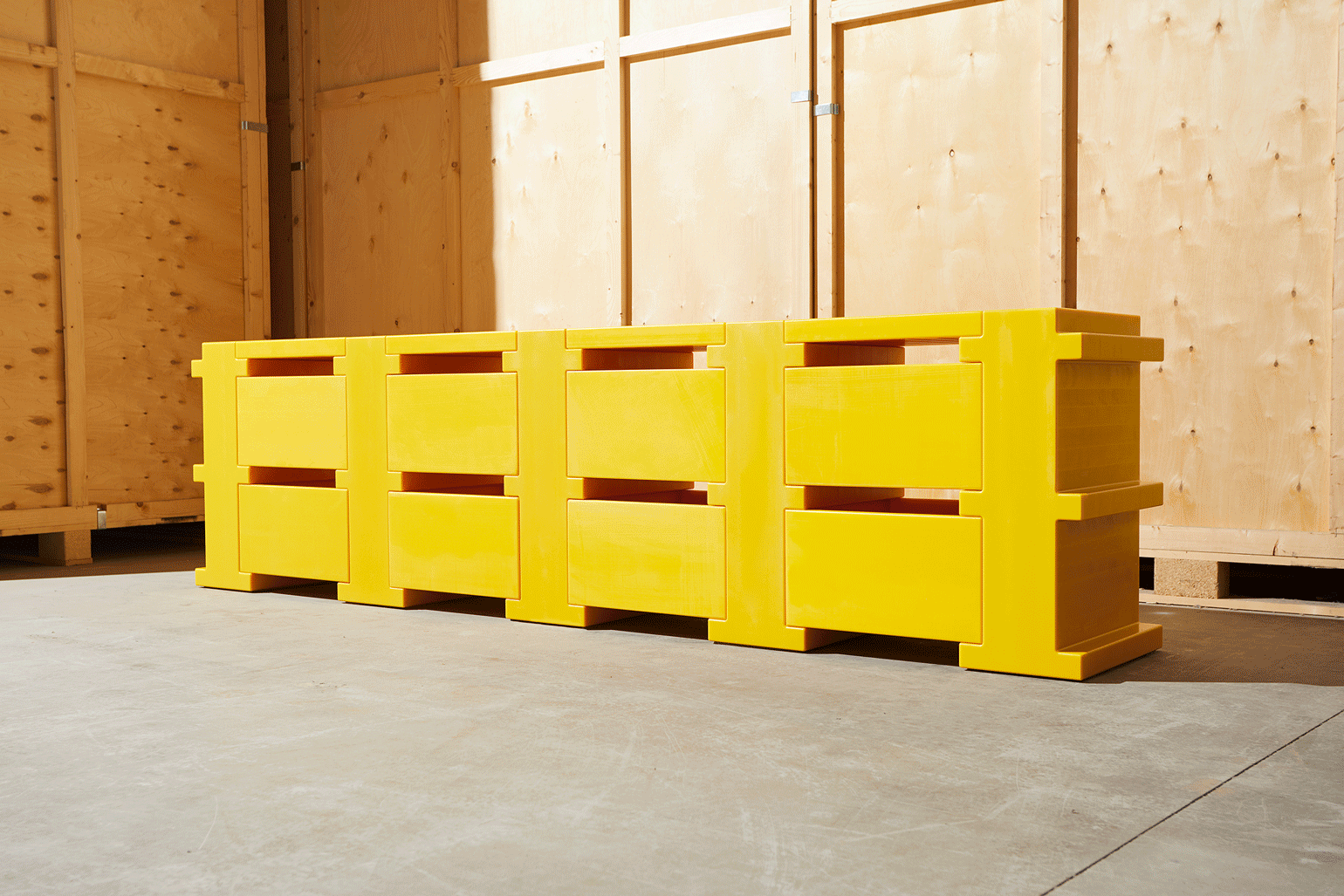
Steel wire rings, rubber and nylon are just some of the raw materials designer Philippe Malouin has been working with lately. He’s not uprooting his design career and turning to factory work, instead he has been rustling up his first collection of office furniture for Salon 94 Design, all made with industrial materials, that will launch at Design Miami/Basel next week (11-16 June).
This collaboration follows on from Design Miami 2017. Salon 94 Design co-founder Paul Johnson spotted the brutalist concrete Core bench by Malouin (Wallpaper* Designer of the Year in 2018, and a 2019 judge) that was created for the Kalejdohill project in Sweden. Johnson was swiftly keen to create a version for the gallery, which showcased at the Floridian fair. There is a similar type of robust energy in this vibrant collection, which uses an assortment of techniques: from welding to casting, to develop the modern workplace pieces.
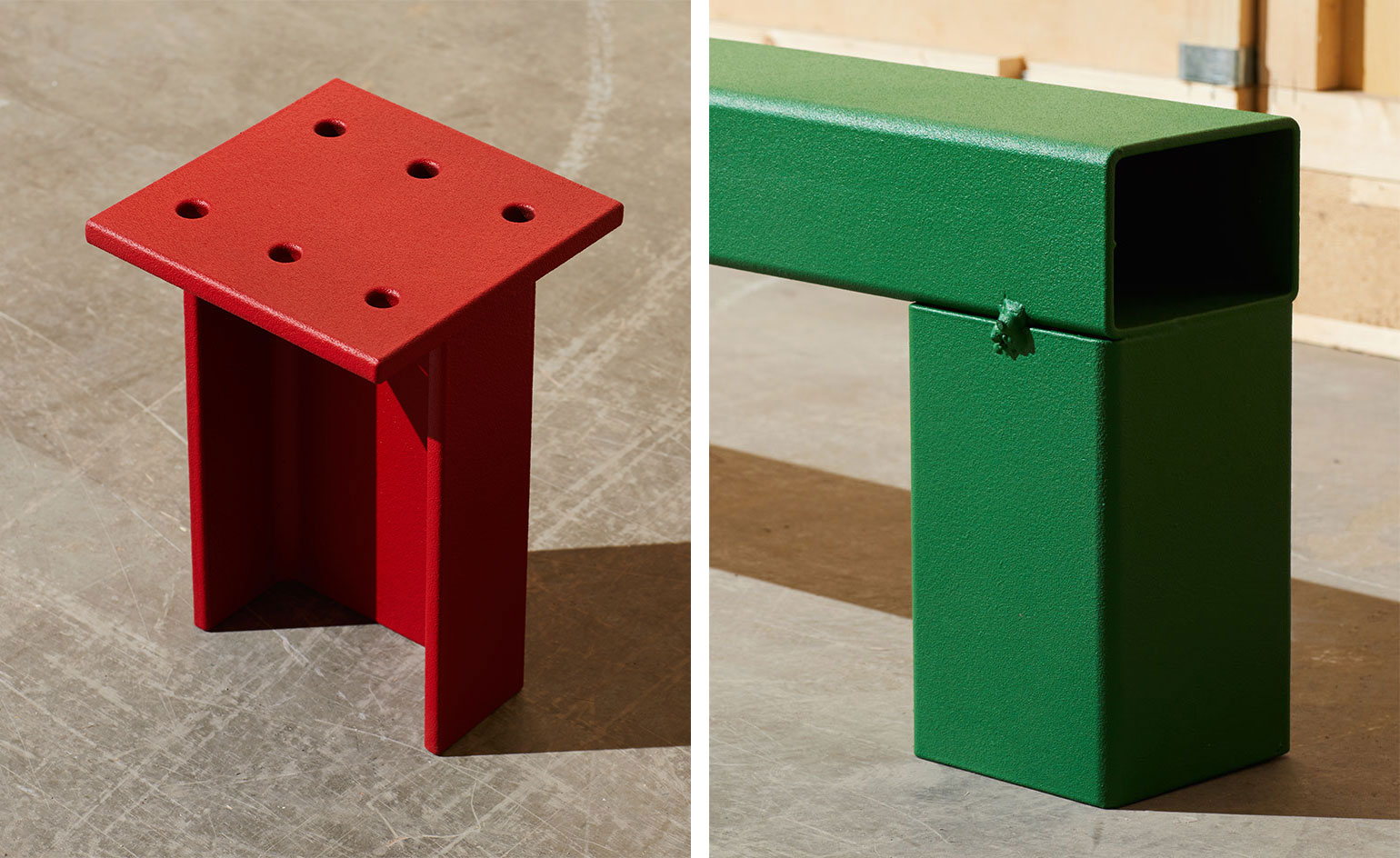
‘We were interested in studying office archetypes and reinterpreting them using industrial materials and processes,’ says Malouin. Taking into consideration the pacy evolution of office environments, from executive spaces in skyscrapers to the hyper-networking co-working culture, the London-based designer has realised experimental forms including a translucent sculptural seat in rubber and a chair in steel that riffs off the classic executive office chair in its structure, with its nuts and bolts exposed. A monolithic cargo container-style sideboard packs a punch too, but the fact that it exists in a bright, sunny yellow tone, and is made out of nylon, adds a playful slant.
‘So many offices are grey and plain. Some vibrancy is very important,’ Malouin explains. But these colours were not artificially injected into the collection, they are indicative of the process. ‘The colours are a direct result from working with these specific industrial materials as they are standard colours. I thought it was important to use the standard colours materials come in in order to communicate process’.
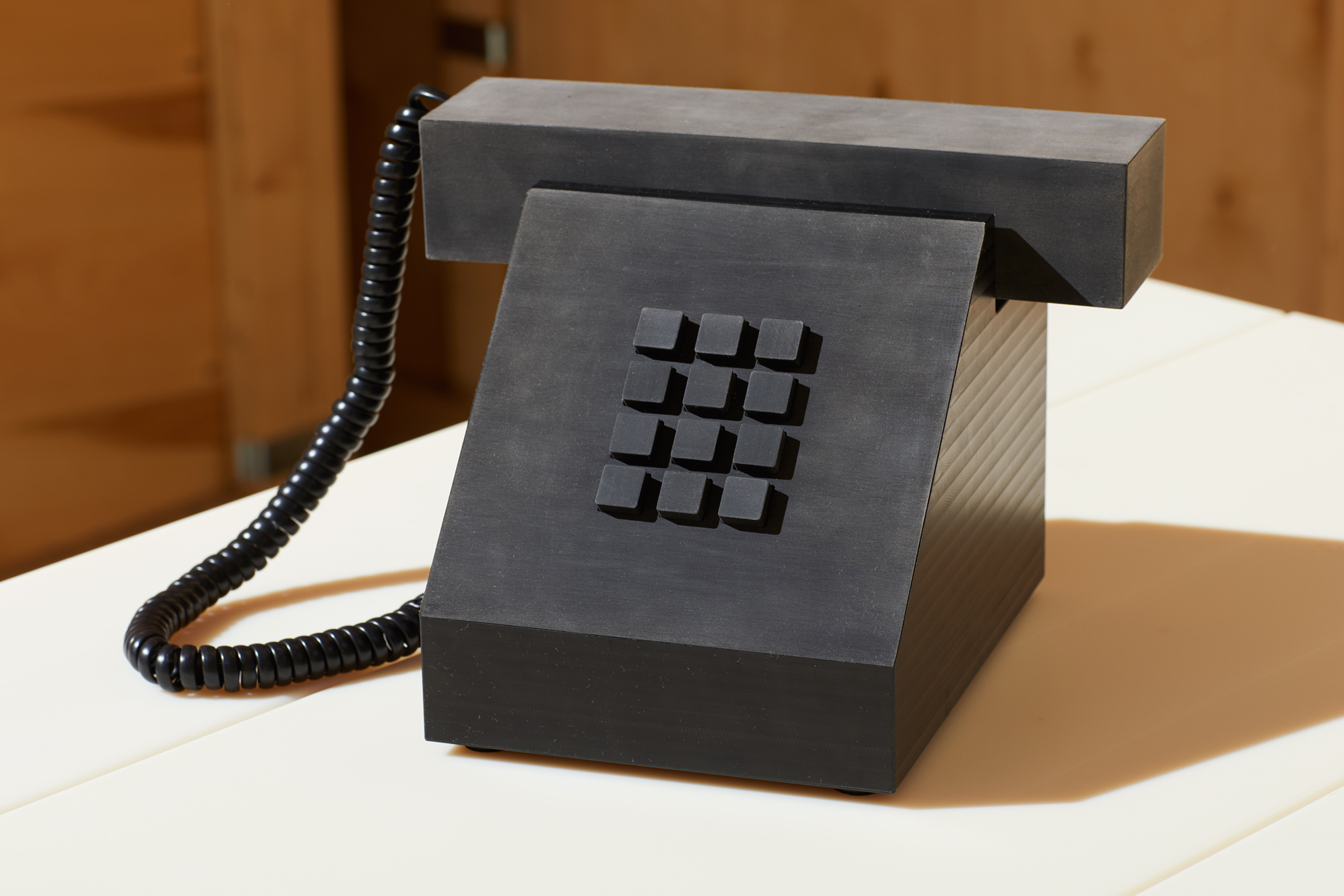
The collection could deck out an entire office; smaller tools come in the form of sturdy pen pots and bookends in steel, wall hooks and even a 1970s-esque nylon telephone. Malouin’s vision for the office offers a fresh take on archetypes, edging these away from grayscale and corporate.
So many offices are grey and plain. Some vibrancy is very important
As for his own office? ‘[It's] a jumble of materials and samples, and experiments, and it is packed to the brim! It has lots of plants and nice daylight’. Hopefully more modern masterpieces we get to experience soon.
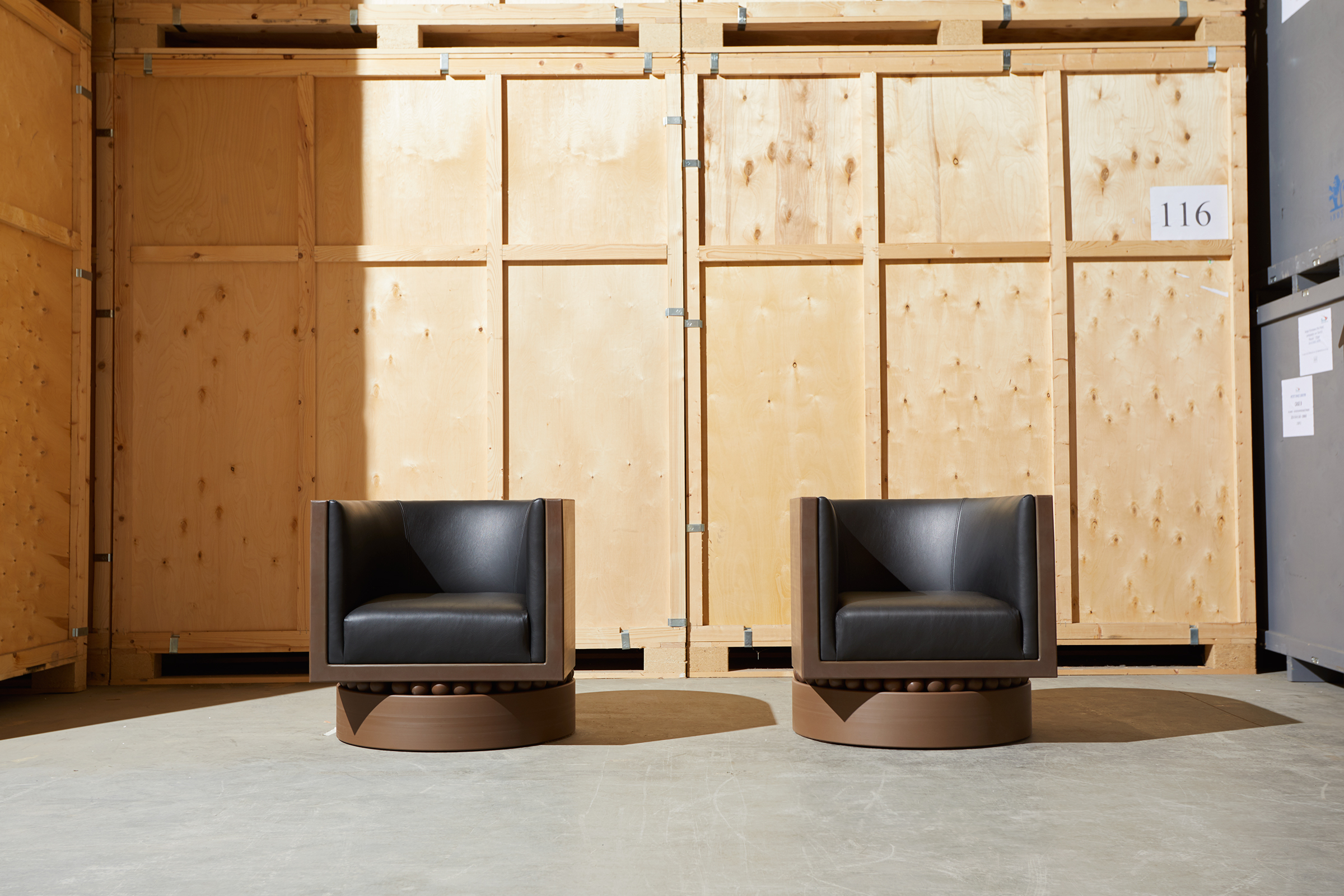
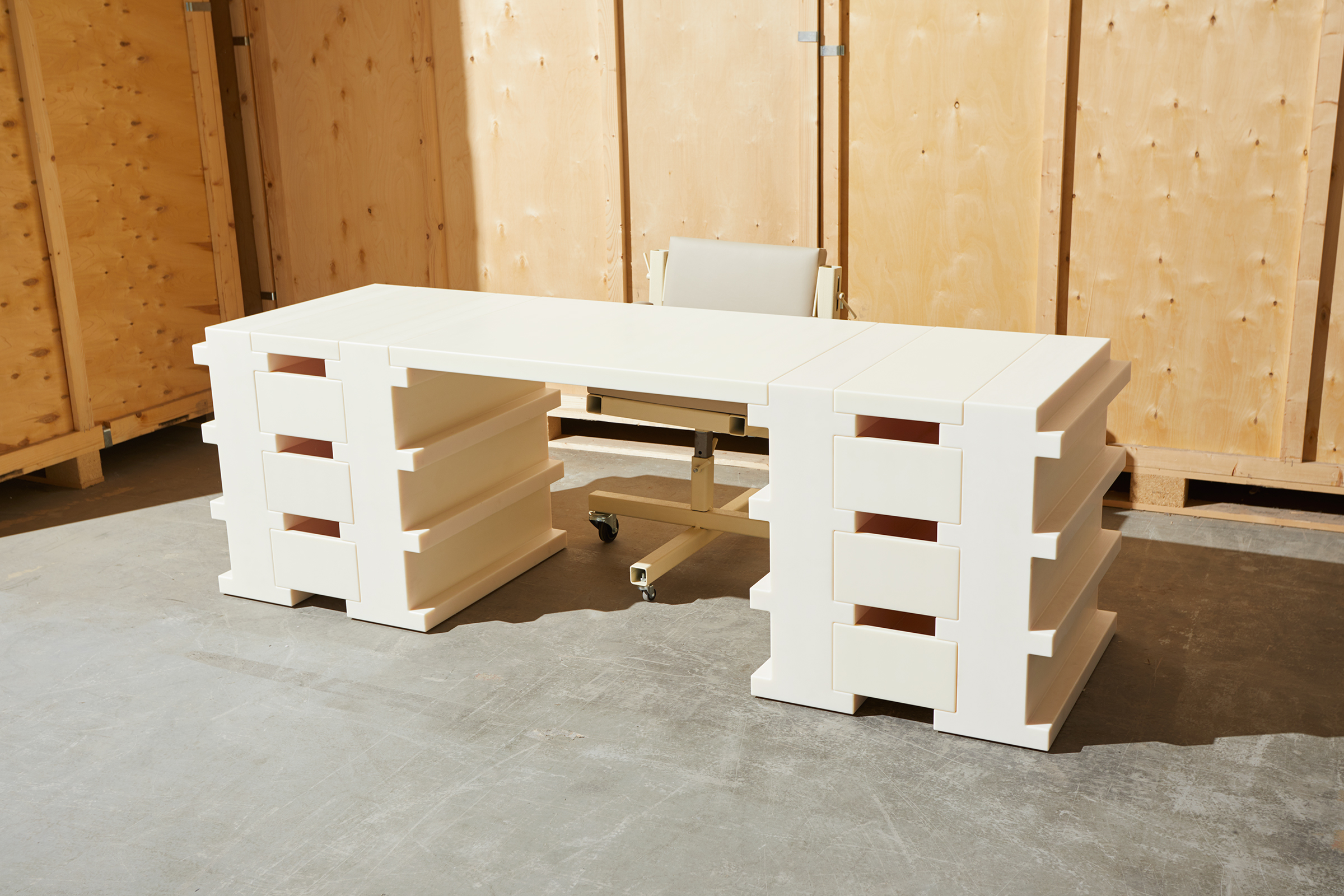
INFORMATION
Industrial Office is on view 11–16 June. For more information, visit the Salon 94 Design website
ADDRESS
Wallpaper* Newsletter
Receive our daily digest of inspiration, escapism and design stories from around the world direct to your inbox.
Hall 1 Süd
Messe Basel
Switzerland
Sujata Burman is a writer and editor based in London, specialising in design and culture. She was Digital Design Editor at Wallpaper* before moving to her current role of Head of Content at London Design Festival and London Design Biennale where she is expanding the content offering of the showcases. Over the past decade, Sujata has written for global design and culture publications, and has been a speaker, moderator and judge for institutions and brands including RIBA, D&AD, Design Museum and Design Miami/. In 2019, she co-authored her first book, An Opinionated Guide to London Architecture, published by Hoxton Mini Press, which was driven by her aim to make the fields of design and architecture accessible to wider audiences.
-
 Put these emerging artists on your radar
Put these emerging artists on your radarThis crop of six new talents is poised to shake up the art world. Get to know them now
By Tianna Williams
-
 Dining at Pyrá feels like a Mediterranean kiss on both cheeks
Dining at Pyrá feels like a Mediterranean kiss on both cheeksDesigned by House of Dré, this Lonsdale Road addition dishes up an enticing fusion of Greek and Spanish cooking
By Sofia de la Cruz
-
 Creased, crumpled: S/S 2025 menswear is about clothes that have ‘lived a life’
Creased, crumpled: S/S 2025 menswear is about clothes that have ‘lived a life’The S/S 2025 menswear collections see designers embrace the creased and the crumpled, conjuring a mood of laidback languor that ran through the season – captured here by photographer Steve Harnacke and stylist Nicola Neri for Wallpaper*
By Jack Moss
-
 We explore Franklin Israel’s lesser-known, progressive, deconstructivist architecture
We explore Franklin Israel’s lesser-known, progressive, deconstructivist architectureFranklin Israel, a progressive Californian architect whose life was cut short in 1996 at the age of 50, is celebrated in a new book that examines his work and legacy
By Michael Webb
-
 A new hilltop California home is rooted in the landscape and celebrates views of nature
A new hilltop California home is rooted in the landscape and celebrates views of natureWOJR's California home House of Horns is a meticulously planned modern villa that seeps into its surrounding landscape through a series of sculptural courtyards
By Jonathan Bell
-
 The Frick Collection's expansion by Selldorf Architects is both surgical and delicate
The Frick Collection's expansion by Selldorf Architects is both surgical and delicateThe New York cultural institution gets a $220 million glow-up
By Stephanie Murg
-
 Remembering architect David M Childs (1941-2025) and his New York skyline legacy
Remembering architect David M Childs (1941-2025) and his New York skyline legacyDavid M Childs, a former chairman of architectural powerhouse SOM, has passed away. We celebrate his professional achievements
By Jonathan Bell
-
 The upcoming Zaha Hadid Architects projects set to transform the horizon
The upcoming Zaha Hadid Architects projects set to transform the horizonA peek at Zaha Hadid Architects’ future projects, which will comprise some of the most innovative and intriguing structures in the world
By Anna Solomon
-
 Frank Lloyd Wright’s last house has finally been built – and you can stay there
Frank Lloyd Wright’s last house has finally been built – and you can stay thereFrank Lloyd Wright’s final residential commission, RiverRock, has come to life. But, constructed 66 years after his death, can it be considered a true ‘Wright’?
By Anna Solomon
-
 Heritage and conservation after the fires: what’s next for Los Angeles?
Heritage and conservation after the fires: what’s next for Los Angeles?In the second instalment of our 'Rebuilding LA' series, we explore a way forward for historical treasures under threat
By Mimi Zeiger
-
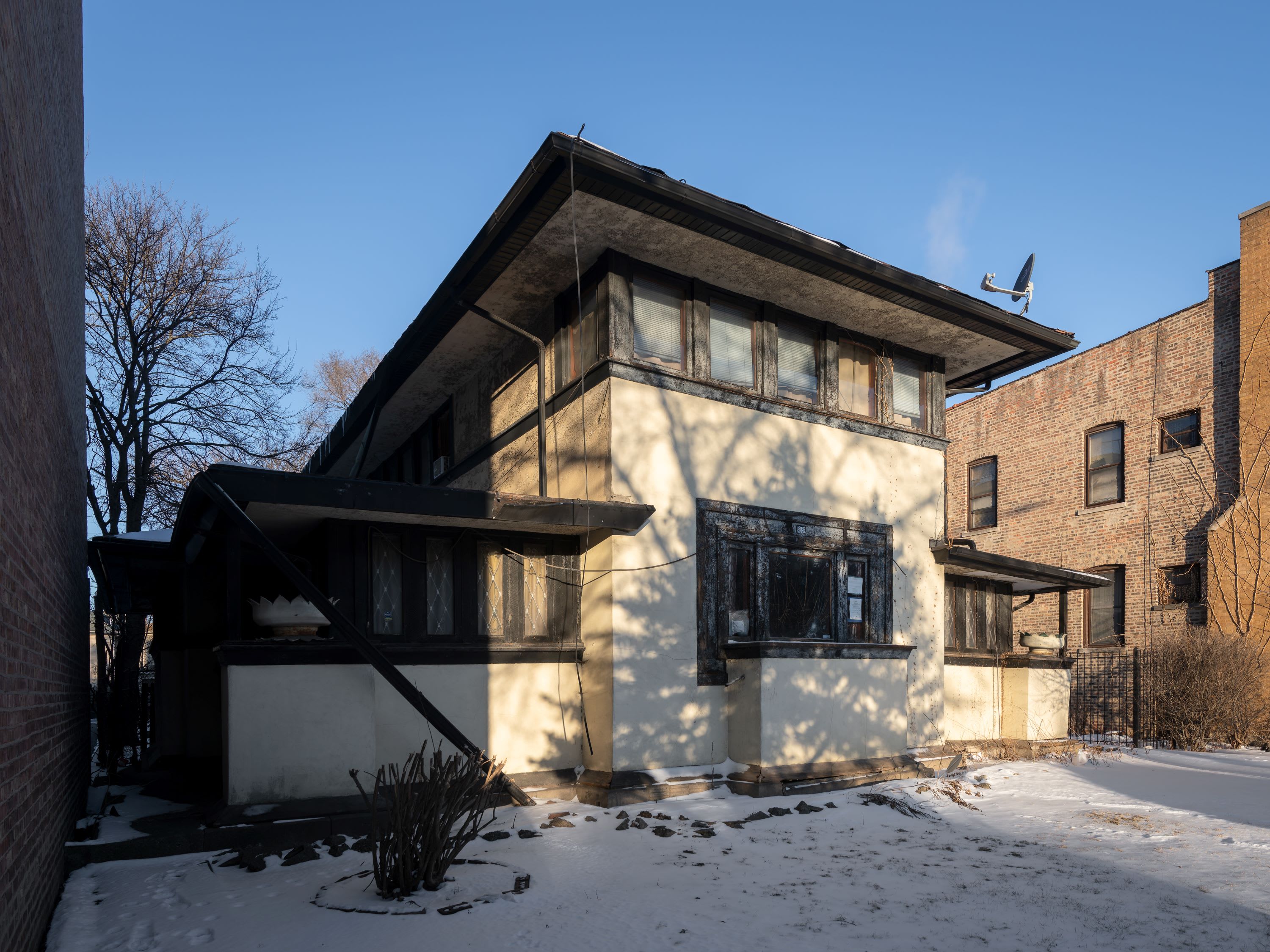 Why this rare Frank Lloyd Wright house is considered one of Chicago’s ‘most endangered’ buildings
Why this rare Frank Lloyd Wright house is considered one of Chicago’s ‘most endangered’ buildingsThe JJ Walser House has sat derelict for six years. But preservationists hope the building will have a vibrant second act
By Anna Fixsen